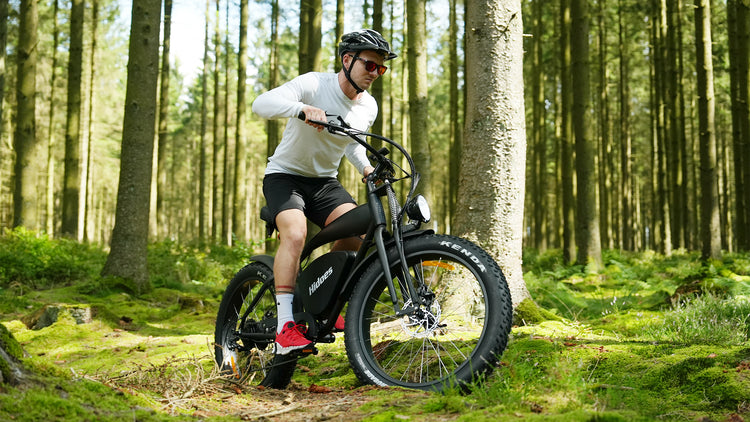
When winter is covered with ice and snow, most cyclists put their bikes away and wait for warm weather to return. However, for those dedicated to e-bikes, winter doesn't necessarily mean the end of their riding adventures. In fact, riding an e-bike in the snow is an exciting and practical way to see a winter wonderland. In this article, we’ll look at how people use e-bikes to ride in the snow and provide some tips to make your snow rides safe and enjoyable.
1. Choose the right tires size
The key to successful snow riding on an e-bike starts with the right tires. The 4-inch fat tires commonly found on electric fat bikes are wider to provide better traction in snow and ice. These tires help distribute your weight more evenly and prevent you from getting stuck in the snow.
2. Reduce tire pressure
Lowering tire pressure can also improve traction in snowy conditions. Lowering your tire pressure increases the contact area between your tires and the ground, giving you better grip on slippery surfaces. Be sure to check your bike's recommended tire pressure range and stay within those limits.
3. Use studded tires in icy conditions
If you regularly encounter icy conditions, studded tires can be a game-changer. These tires have metal studs embedded in them to provide excellent grip on ice. Note that studded tires can be noisy and wear out faster on dry pavement, so it's best to save them for icy days.
4. Dress warmly and stay visible
Biking in the snow can be cold, so wear layers to stay warm. High-visibility clothing and lights are critical for snowy conditions, as reduced visibility is a common challenge during the winter. Make sure other road users can see you.
5. Adapt your riding style
Snowy conditions require a more cautious approach to riding. Slow down, make wider turns, and be prepared for longer stopping distances. Avoid sudden maneuvers and brake gently to prevent skidding.
6. Estimate your battery life
In cold winter, the outdoor temperature is very low, which will seriously affect the battery life of electric bicycles. Check the battery charge before heading out, and use half of your summer mileage to estimate how far you can go. Arrange your itinerary reasonably to prevent danger caused by insufficient battery power in the field.
7. Maintain your e-bike
Before heading out to a winter wonderland, give your e-bike a thorough inspection. Make sure all parts are in good working order and keep your bike well lubricated. Cold temperatures can affect battery performance, so it's a good idea to carry spare batteries or plan short rides in extremely cold weather.
8. Know when to stay home
While biking in the snow can be an exciting adventure, sometimes it's best to stay home. Extreme weather conditions, such as heavy snow or icy roads, may make riding unsafe. Always prioritize your safety and well-being.
Conclusion
With the right preparation and precautions, riding in the snow on an Hidoes e-bike is entirely possible. Embrace the beauty of winter and explore a new dimension of riding by going snow riding on an e-bike.Remember to choose the right tires, wear warm clothing, adjust your riding style, and most importantly, stay safe on your winter riding adventures.
If you still don't have a fat tire electric bike, please visit Hidoes long range electric fat bike here.








